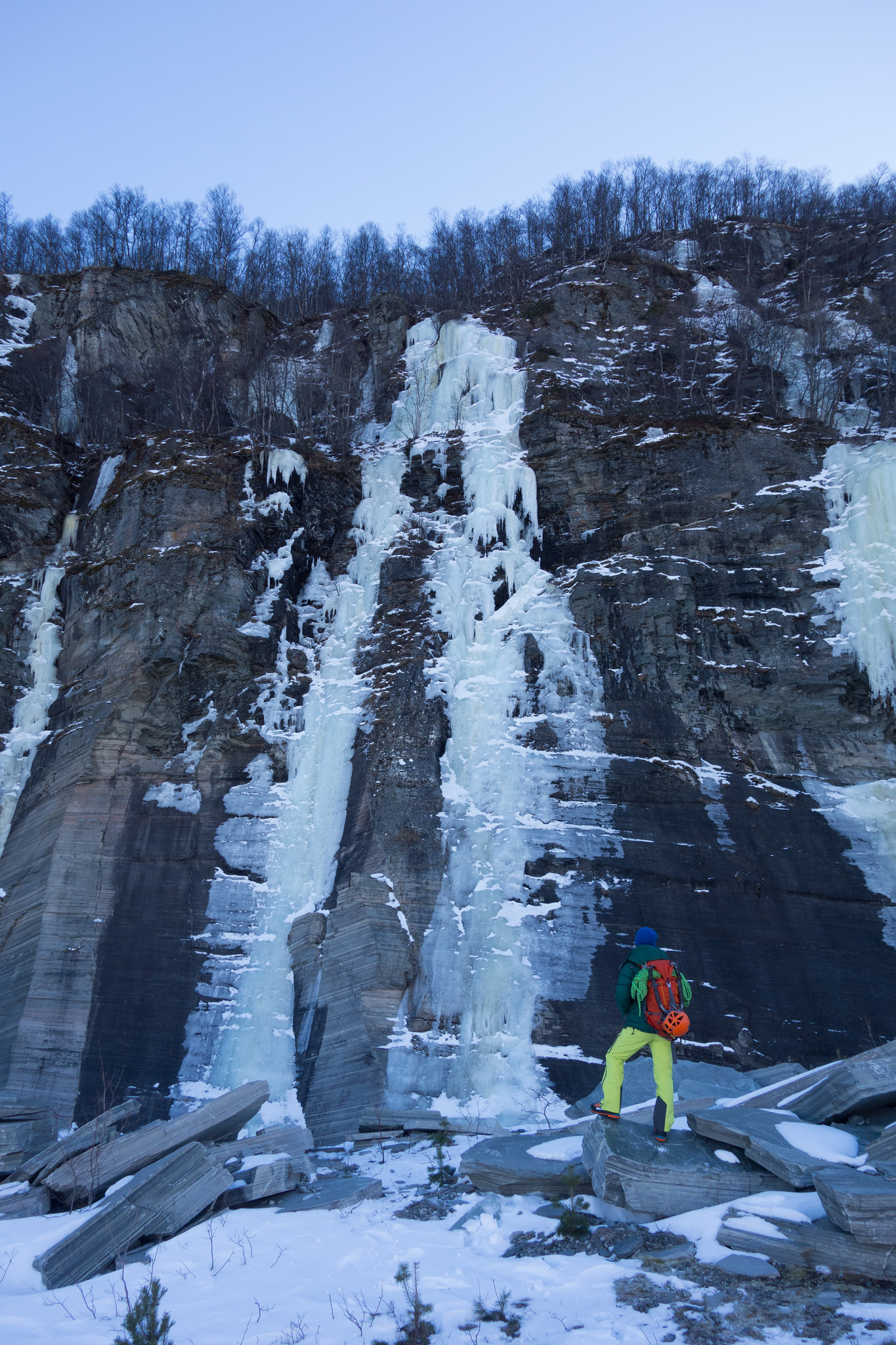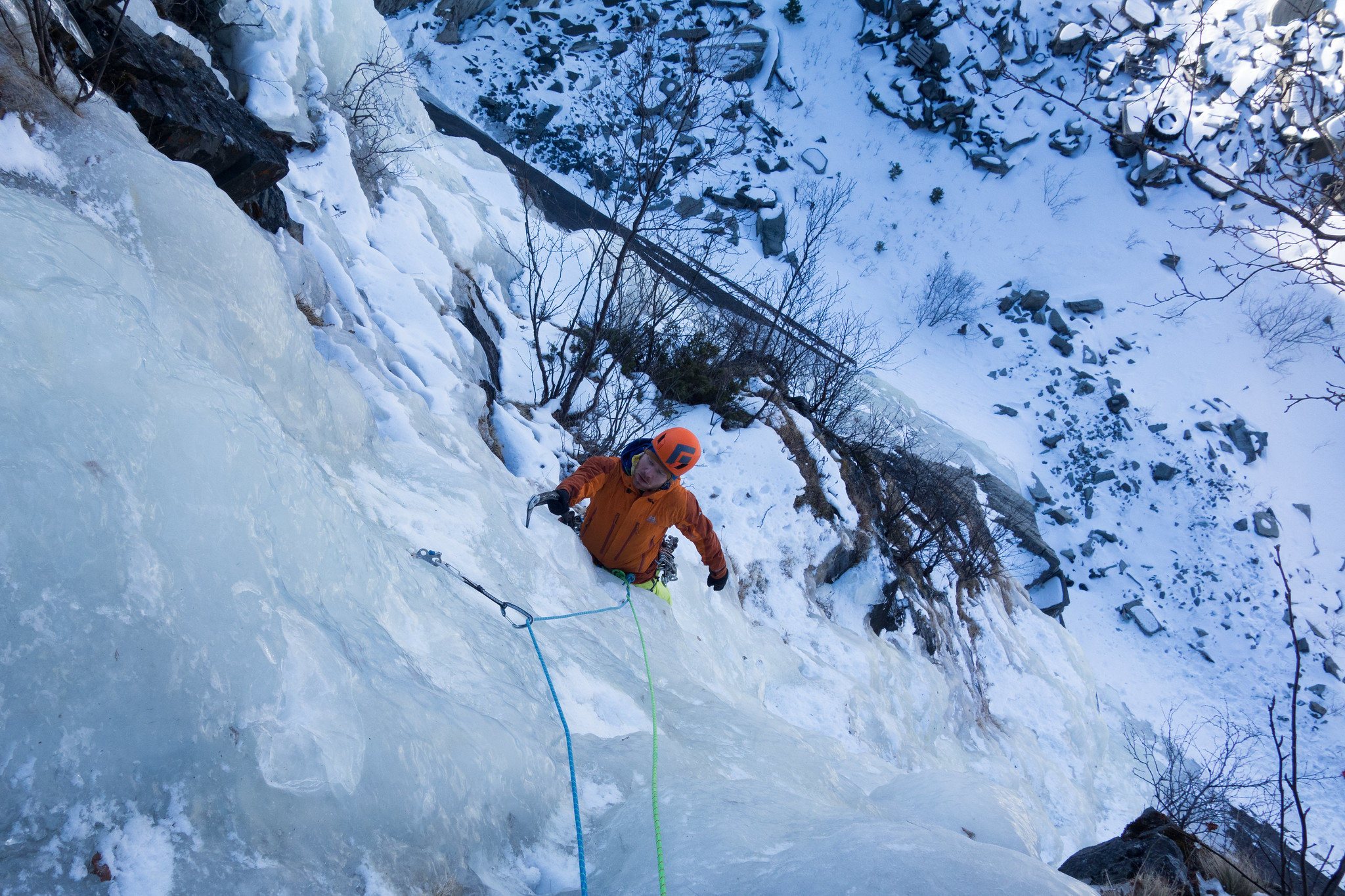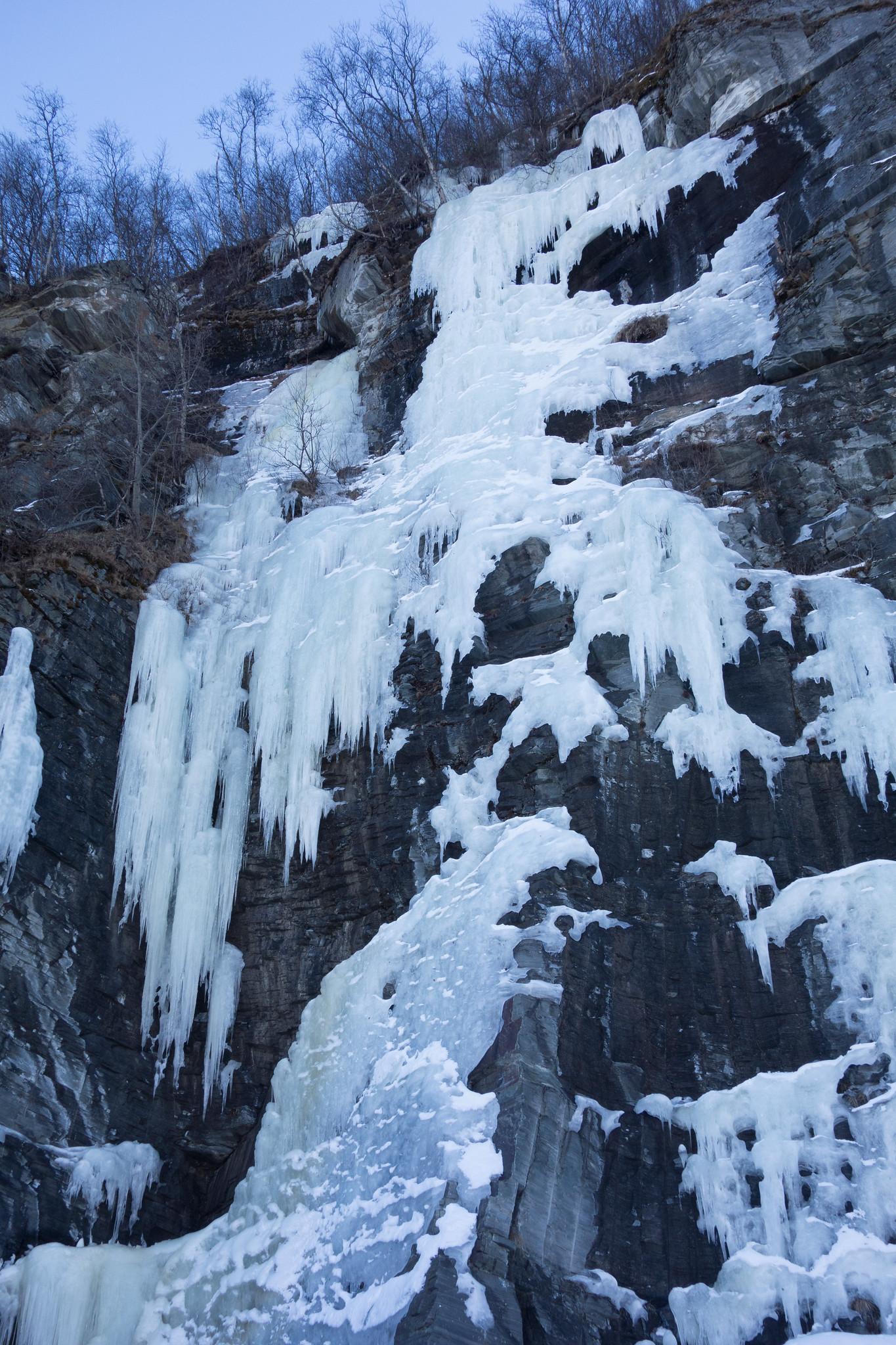With temperatures warming up it seemed an ideal time to make my first trip to Drivdalen this season, where the high elevation would hopefully yield some good late season conditions. My friend Rick was visiting from the UK for the weekend. We have a history of driving from London to the Scottish Highlands and back in a weekend so Oslo to Oppdal would hopefully be easy by comparison.
Saturday's plan was the slate quarries at Klevan, which had ice for the first time since I had moved to Norway nearly three years ago. A quick exploration of the place revealed some eye-catching lines, some of which were a blend of ice and mixed. Some were not sufficiently formed but there were plenty of routes that were.
Rick was only starting to get back into climbing after years of ultra-marathon running so the harder lines could wait for another day. Despite being primarily a single pitch crag it didn't feel like 'cragging' as most of the routes were a full rope length and with plenty of climbing.
 |
| Ice lines at Klevan |
Kleivkallen and Kleivbrura (both WI4) looked the obvious routes to climb as they were among the tallest and fattest and in close proximity with one another. Both were a slabby angle with steeper sections interspersed but fairly sustained. Kleivkallen started steady enough but unleashed some massive dinner plates at the top of the pitch. One block struck me on the thigh and left a nice bruise but fortunately I'm naturally well protected in that area. The impact zone at the base of the route gradually increased the higher I climbed, meaning Rick needed to progressively move his belay spot back to avoid the projectiles. Fortunately I've had a lot of exposure to this sort of ice this season but on the plus side it's definitely improved my technique.
 |
| Rick beneath Kleivkallen (left) and Kleivbrura (right). Both WI4. |
 |
Me leading Kleivkallen (WI4)
(Photo by Richard Ashton) |
 |
| Rick seconding Kleivkallen (WI4) |
 |
| Rick starting up Kleivbrura (WI4) |
Both routes finished on a broad ledge according to the guidebook but a short 15m section of ice above us left the impression that we were not at the top until this was surmounted. Both routes extended to around 70m as a consequence.
We had lost a bit of time around midday due me forgetting my lunch and thus needing to drive back to our hut to fetch it. Once upon a time I would just have climbed on an empty stomach but since my fatigue-ridden 2016 it's been important for me to take on food throughout the day to stop my energy levels dropping off.
With dusk drawing in I was keen to squeeze a third route in to make up for the time lost returning to the hut. Rick was pooped but happy to belay. A route called French Connection that I had been saving until last looked spectacular but unfortunately now looked too affected by the afternoon sun. It's definitely one to return for next time it forms though. The middle section looked thin but is actually protected by a couple of bolts.
 |
| French Connection (WI5, M5) |
Direktør Fridtjof Mathisen (M5, WI4+) was a good substitute though and looked to offer plenty of variety. It had a dry tooling start up some up some short slate walls in order to reach a thin shoot of ice. There was little in the way of protection through the dry tooling portion, although I had stripped my rack down to bare minimum anyway. Less time needed for gear faffing at least, which was no bad thing given the fading light. A sling over a sapling down and to my left would have to suffice, although it would almost certainly not have held my fall. At least it gave Rick a reason to keep belaying me. Fortunately there was nothing too marginal to commit to. As with with North Wales slate the edging was positive and pretty easy, and like a lot dry tooling in the lower grades I found it easier to rest my axes on my shoulder and just to use my hands for the final tricky move over the top. Once below the ice I placed a couple of long screws to lessen the seriousness of the climb. From here on I would be able to place protection at will.
 |
| Me on the lower part of Direktør Fridtjof Mathisen (M5, WI4+). Note the only protection was the small sapling. |
The ice section proved surprisingly fun and varied. The first part was easier to climb with the aid of the slate wall to my left, which formed an open corner with the ice. My left crampon found some positive edges whilst my right punched cleanly into good ice. This felt more like proper mixed climbing.
The narrowness of the ice limited route finding options a little but this made the route all the better due to the great degree of application needed.
The top section proved a grand finale and like nothing I've climbed before. A leaning wall behind me formed a closed corner with the ice and left me too cramped to swing my axes to any degree. Even short swings caused my axes to ricochet off the rock and upset my rhythm. I changed tack and resorted to back-and-footing the closed corner with my back resting obliquely against the ice. Meanwhile I walked my feet up the features. Despite the unorthodox nature I felt suitably wedged in place.
I contemplated climbing the short, bare final corner that led into the woods but soon gave up as it was earthy and loose and wholly unpleasant. Finishing at the top of the ice seemed the natural conclusion and from here I made an abalakov.
By this point dusk was well and truly upon us. Three excellent routes in the bag with the third one particularly fine. Plenty more to return to though when the next opportunity arises. Hopefully I won't have to wait for another three years for that occasion.








Comments
Post a Comment